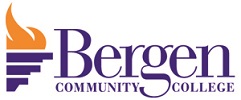Find your path to success with a diverse range of more than 120 degree, certificate, and continuing education programs.
All candidates seeking a degree in Bergen Community College’s DMS program must possess the essential skills and abilities necessary to complete the curriculum successfully with or without reasonable accommodations for any disabilities the individual may have.
Throughout the course of the program, students will learn, practice, and verify numerous competencies (representing all three learning domains (cognitive, psychomotor, and affective) in a variety of settings including the classroom, the laboratory, and in the clinical environment. Each setting requires its own list of standards.
REQUIRED CLASSROOM STANDARDS
- Perceive and integrate information from a variety of sources including oral instruction, printed material, visual media, and live demonstration.
- Students must participate in classroom discussion, present oral reports, and successfully pass examinations which include the interpretation of sonographic images.
- Completion of these tasks requires cognitive skills including reading, writing, and problem-solving. To be physically capable of classroom work students must, with assistance, be able to see, hear, speak, sit, and touch.
REQUIRED LABORATORY STANDARDS
- Students must demonstrate fine psychomotor skills to manipulate sonographic transducers and ultrasound equipment.
- Students must demonstrate general professional behaviors such as team cooperation as well as the ability to communicate effectively with others.
- In addition to the physical capabilities necessary for classroom activities, laboratory sessions require a student, with assistance to reach to position and roll patients from side to side.
- Fine motor skills are necessary to manipulate the ultrasound machine and transducer simultaneously, using both hands to perform procedures.
- Considerable strength is required for pushing/pulling an ultrasound machine into position or to patient rooms, turning and moving patients, pushing wheelchairs and stretchers, and performing cardiopulmonary resuscitation.
CLINICAL EDUCATION STANDARDS
- Students must be able to obtain medical history from patients, parents or guardians.
- Students must be able to deliver, receive, and interpret verbal and non-verbal communication in English to and from the patient, physician, the clinical instructor, and student peers.
- Students must be able to recognize and react to signs of medical emergencies.
- Students must record medical history, interpret patient charts and sonographic procedure requests.
- Students must be able to distinguish audible sounds, visually monitor patients in dimmed lighting, and differentiate among the subtle shades of gray and color used during an ultrasound procedure.
- Students must maintain physical balance while performing examinations on patients of varying body habitus as well as meeting mental and physical demands of the different examination environments (ultrasound room, ICU, operating room, or emergency room.)
- Students must demonstrate sensitive responses to patients in the clinical environment and interact with physicians, peers, patients, clinical staff and faculty in an emotionally stable, professional, and ethical manner.
- Students must treat every patient with dignity and respect, regardless of race, religion, sex, orientation, gender expression, age, ethnicity, or physical disability.
The following outlines the physical, mental, and emotional capabilities appropriate to the profession of Diagnostic Medical Sonography and students enrolled in the clinical phase of the DMS Program.
Prospective DMS students must possess sufficient strength, motor coordination and manual dexterity to:
- Stand and walk for 85% of work time.
- Reach at or above shoulder level intermittently for 90% of work time.
- Ability to maintain prolonged arm positions necessary for scanning.
- Must possess sufficient strength, finger dexterity and flexion to perform finite motor skills.
- Must possess sufficient eye/hand coordination skills related to performance of sonographic examinations.
- Lift 45 lbs. unassisted.
- Have the physical strength sufficient to transport, move, lift patients from a wheelchair, stretcher to ultrasound table or patient bed, and physically assist patients into proper positions for examination.
- Move, adjust, and manipulate a variety of ultrasound equipment on wheels weighing up to 500 lbs. to other areas of the facility to perform studies according to established standards.
- The student must be able to use senses (vision, hearing, smell, and touch) to recognize changes in a patient’s condition and needs.
- The student must be able to hear, understand and react quickly to verbal instructions and patient needs, including but not exclusive to hearing codes, alarms, and patient’s calls.
- To work in a semi-darkened room for prolonged periods of time.
Students must be able to consistently demonstrate emotional, mental, and physical health sufficient to:
- Meet the demands of the position including handling stressful situations related to technical and procedural standards and patient care situations.
- Provide physical and emotional support to the patient during sonographic procedures and be able to respond to situations requiring basic first aid, nursing, and emergency care of the patient in the absence of, or until the physician arrives.
- Ability to follow directions effectively and work closely with members of the healthcare community.
- The sonographer must be physically capable of carrying out all assigned duties.
- Must be able to communicate both verbally and non-verbally in an effective manner with staff, patients, and physicians, to explain procedures, give instructions and obtain information.
- To perform sonographic examinations and procedures according to established standards.
- View the recorded images for the purpose of identifying proper protocol, procedural sequencing, technical qualities, and identification of pathophysiology.
